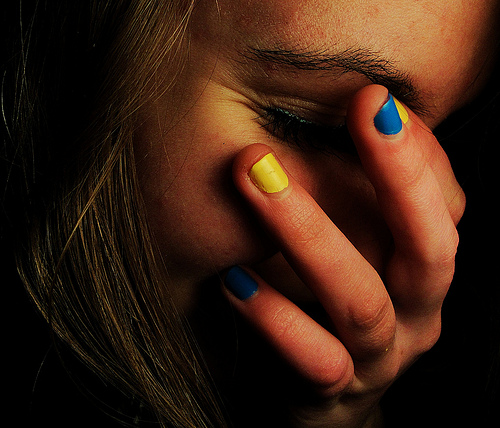
Social anxiety is generally part of the equation if you suffer from paruresis, but there may be other situations that make you uncomfortable that can be attributed to simple shyness. To be fair, shyness can be anything but simple, but it may also be easier to deal with than a full-fledged disorder. So how do you tell the difference?
Signs of shyness
- Blushing
- Butterflies in the stomach
- Sweaty palms
- Increased heart rate
- Hesitation to talk or speaking in a quiet voice
- Inability to make sustained or any eye contact
- Feelings of embarrassment, self-consciousness, insecurity and inferiority
Signs of SAD or a social phobia
Some peg SAD as an extreme form of shyness, the University of Idaho notes, but the condition can go much deeper than shyness. The physical symptoms such as blushing and sweaty palms are on par with the signs of shyness, but the feelings and emotional discomfort can show up as an extreme and intense fear.
Additional signs can include:
- Shaking or trembling
- Shaky voice
- Clammy hands
- Stomach ache, nausea and diarrhea
- Muscle tension
- Confusion
- Fear of embarrassment
- Fear that others will notice you appear anxious
- Intense fear of interaction with those you don’t know
- Avoiding situations that put you as the center of attention or involve speaking to others
A major difference between shyness and SAD is the impact either condition has on your life, as noted by Sy Atezaz Saeed, MD, chair of the psychiatry and behavioral medicine department at the University of Illinois College of Medicine:
The hallmark of social anxiety disorder is that it causes impairment in your function.
While shyness may make you uncomfortable, SAD can make you downright inoperable. Another major distinction is the feelings either condition brings. Shyness brings uneasiness while social phobias tend the come with something that borders on terror.
The terror can come from the mere thoughts of experiencing the symptoms, even when the symptoms themselves are not present. This can, in turn, set up a vicious cycle where the fear of the symptoms induces the very symptoms that you fear. The fear can also be hearty enough to make you avoid situations altogether, once again disrupting your life.
Complications and development
Although SAD and social phobias can make you tremble in fear, they are particularly bold in their own right when it comes to development. Social phobias typically have absolutely no problem expanding into a more far-reaching and debilitating condition. Nor are they shy, so to speak, about calling other conditions into the mix.
For instance, those who suffer from SAD often turn to substances to quell their fears, bringing addiction and substance abuse into the mix. Others become increasingly fearful of any outside contact that they avoid outside exposure altogether, thereby opening the door for agoraphobia.
Left untreated, any type of phobia has the penchant for getting worse, while treatment can effectively hinder further development of the condition and even eradicate the condition altogether.
SOURCES:




